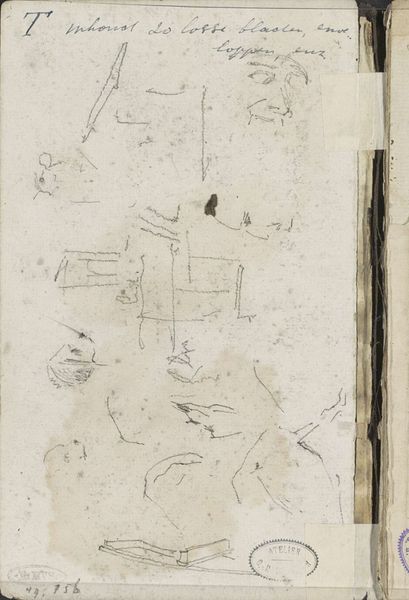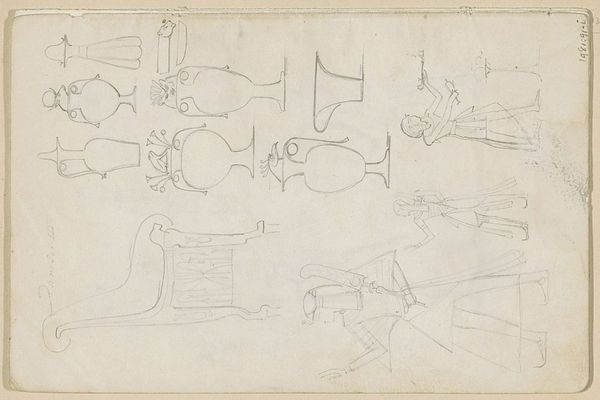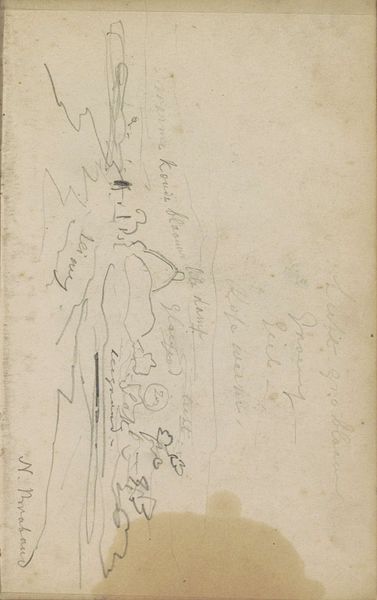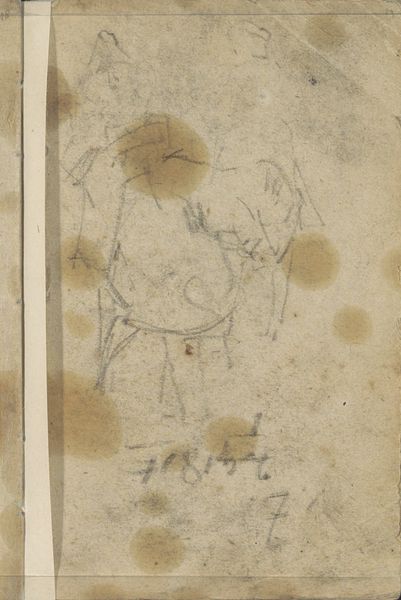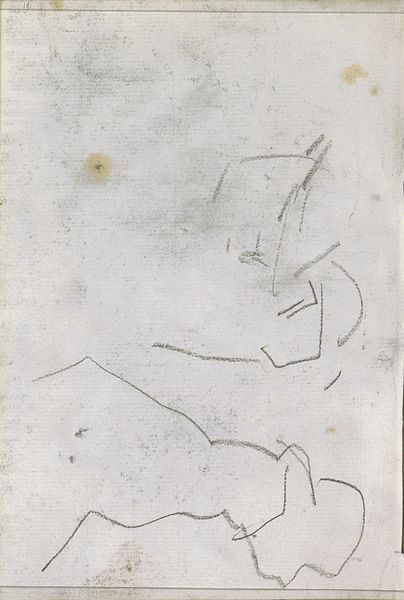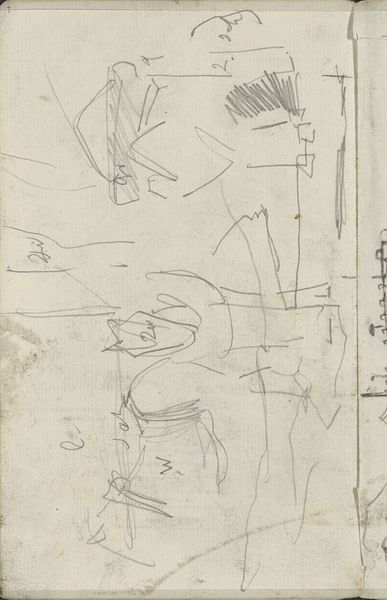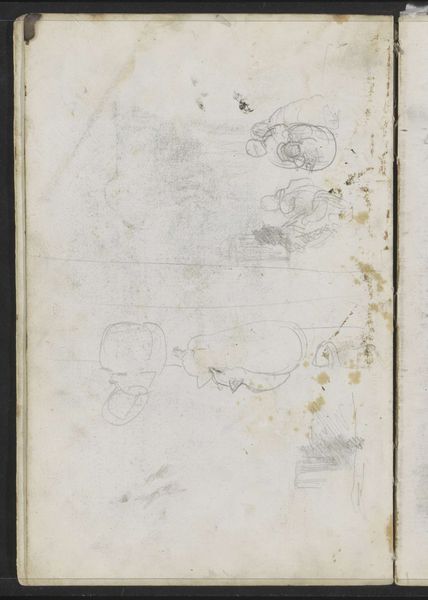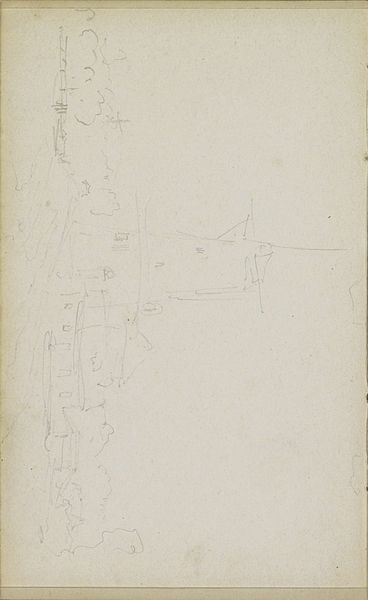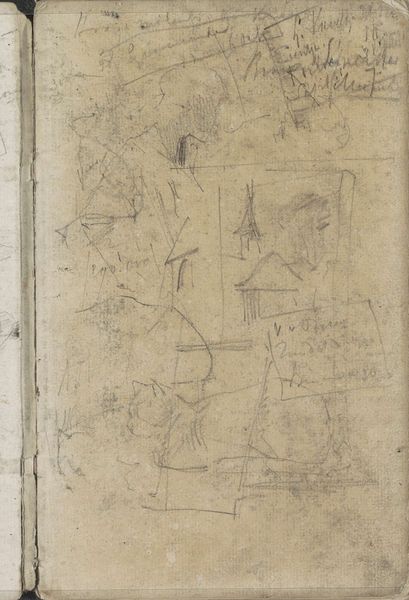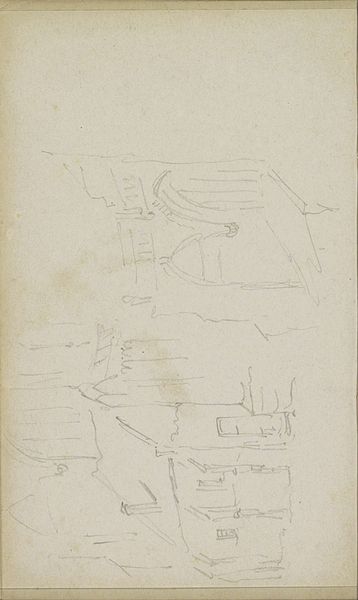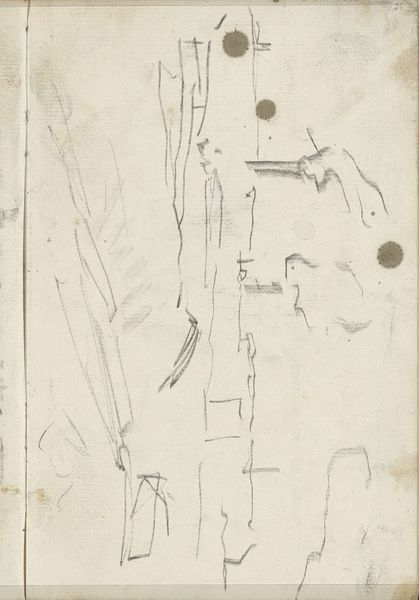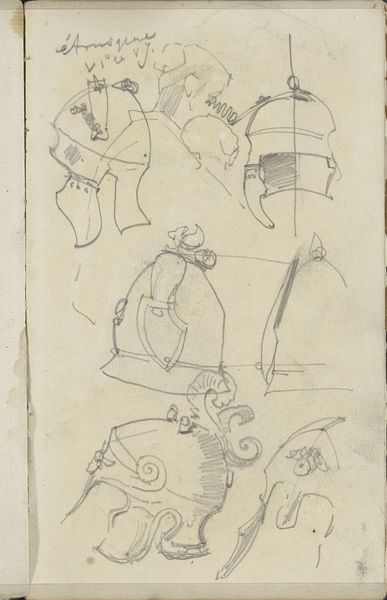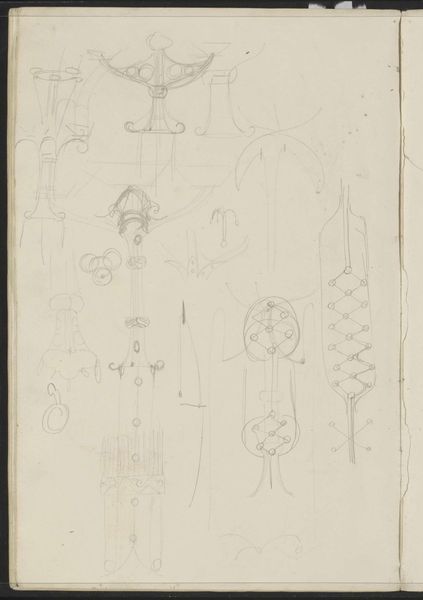
Studieblad, onder andere met kinderen en een lepel Possibly 1883 - 1886
0:00
0:00
georgehendrikbreitner
Rijksmuseum
drawing, paper, pencil
#
portrait
#
drawing
#
aged paper
#
toned paper
#
light pencil work
#
quirky sketch
#
incomplete sketchy
#
paper
#
personal sketchbook
#
child
#
pencil
#
sketchbook drawing
#
watercolour illustration
#
sketchbook art
#
watercolor
Copyright: Rijks Museum: Open Domain
Curator: This is "Studieblad, onder andere met kinderen en een lepel" or "Study sheet, among other things with children and a spoon", by George Hendrik Breitner, possibly created between 1883 and 1886. It’s currently held in the Rijksmuseum collection. What are your initial thoughts? Editor: Sparse and fragmentary. It looks like a momentary glimpse into an intimate scene, but one that’s only partially revealed. The aged paper certainly adds to the feeling that this is a fleeting vision from a bygone era. Curator: Indeed. Breitner’s quick pencil strokes capture multiple studies on a single page, offering a glimpse into his artistic process. Note how the heads of the children are rendered with varying degrees of detail, suggesting a process of refinement in his observation. Editor: I’m also drawn to the materiality. The use of toned paper—what impact did that have on Breitner's process? It evokes questions of scarcity and cost and how he would need to consider this surface when applying pencil. I also see some subtle staining, perhaps watercolor washes? Curator: That’s an insightful observation. The toned paper provides a mid-tone, allowing him to achieve depth and form with minimal lines. And yes, the stains are very interesting in this context, giving us insights on what material conditions allowed this work to exist. His choice to leave these traces also prompts consideration of the boundaries of finish and polish within artistic creation. Editor: Absolutely. The incomplete nature of the sketch also emphasizes process. We see the spoon, the children's profiles, even what appears to be a flower hanging limply at the center. It’s less about a polished product, and more about how the raw sketch contains its own unique visual expression. Curator: Precisely. By isolating the gestures, shapes and portraits like this, Breitner asks us to appreciate form in its nascent stages of development. Editor: I find that thought particularly apt. This incomplete scene feels like an invitation to contemplate the intimate intersection of childhood, domestic labor and perhaps even Breitner's perception and capture of such instances. It provides a privileged peek at an artist thinking and processing. Curator: A most insightful perspective. Breitner offers a rare chance to intimately see inside of the artistic process of representation and creation. Editor: Indeed, and from that standpoint, even its lack of completeness adds significantly to its artistic significance.
Comments
No comments
Be the first to comment and join the conversation on the ultimate creative platform.
